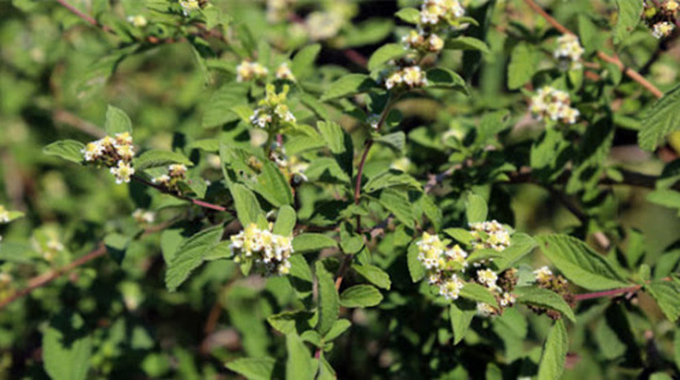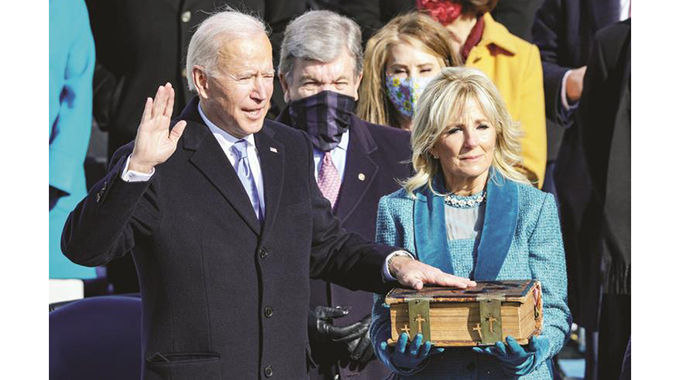Covid–19: Experts caution against use of traditional herbs

Sifelani Tsiko
Agric, Environment & Innovations
The growing use of herbal medicines due to the coronavirus second wave that is threatening to overwhelm fragile healthcare systems across Africa has led to an upsurge in the use of herbal medicines, raising major concerns on adverse reactions and challenges in monitoring their safety.
Since January 2020, Zimbabwe and many other African countries have suffered a relatively mild impact of the Covid-19 pandemic.
But a year on, the continent is now witnessing rising death rates that have surpassed the global average for the first time.
Zimbabwe and most countries in Africa are now facing challenges related to hospital capacity, including the overwhelming of funeral parlours.
Faced with rising deaths, there is a new herbal craze and frenzied demand for traditional herbs such as Umsuzwane/Zumbani and a whole range of concoctions that use a mixture of guava, mopane leaves, gumtree leaves, ginger, garlic, onions and lemons.
The most popular is steaming using the zumbani herb, which many say it’s helping them to heal some of the symptoms of the Covid-19 pandemic.
Some drink the hot concoctions, including a whole range of modern anti-biotic medicine and vitamin supplements.
Business is brisk for these herbs and supplements with vendors, supermarkets and organic herbs peddlers selling it to desperate people.
In the late 1980s and early 1990s, before the roll out of ARVs to treat HIV and Aids, there was a massive demand for the wild African potato, fungal teas and numerous other traditional herbal medicines that were used by desperate people in an attempt to treat HIV-related problems such as dermatological disorders, nausea, depression, insomnia, and weakness.
Toxicologists say there are numerous risks related to some herbal and traditional medicines as they are not well-researched, are poorly regulated and may contain adulterated products that may produce adverse effects.
University of Zimbabwe pharmacist — toxicologist Prof Dexter Tagwireyi says the vicious and second wave of the Covid-19 pandemic has brought with it various toxicological issues which have ranged from self-medication with high doses of potentially toxic medicines like chloroquine to inappropriate use of dangerous methanol-based hand-sanitisers.
“With the recent surge in reported cases and mortalities from this disease, many Zimbabweans have resorted to the use of herbal and other products for “prevention” and home care of patients suffering from mild to moderate symptoms,” he said.
“Perhaps top on the list with respect to herbal home remedies is the plant Lippia javanica (fever bush/tea, Umsuzwane in isiNdebele, or Zumbani in the Shona language). This plant which has been used traditionally for the management of various ailments including coughs and colds is taken as a tea and or used for steaming (kunatira in Shona or ukuthunqisela in Ndebele).
“Others have reported good results and yet some remain skeptical on the efficacy of this plant for the prevention and or treatment of COVID-19 symptoms – all pointing to the need for well-designed systematic scientific enquiry to be conducted.”
Most people drinking zumbani tea and using its leaves for steaming have acquired it from various sources – friends, relatives, friends, supermarkets as well as from herbal plants and product vendors.
Many have gone out to pick the leaves themselves from nearby bushy areas and various locations where the plant is found.
Prof Tagwireyi warns that there is danger and risk due to lack of adequate knowledge about the plant.
“But zumbani looks like and even almost smells like another plant with a more sinister history and CV,” he said. “It looks like Lantana camara (called Ubuhobe besikhiwa in Ndebele and Mbarapati/Rukato in Shona) which many of us would recognise especially when the fruits/berries are out.
“However for those not well trained or experienced, it is possible to easily mistake Lantana camara for Lippia javanica especially if the former is not fruiting. It is easy to see why one could be confused by the two more so if the Lantana camara has white flowers which zumbani also has. The way both plants smell does not make the job any easier.
“Interestingly I took leaves of both plants and asked a colleague to differentiate them from the way they smelled . . . it was a tall order for him.”
The UZ toxicologist says whilst toxicity of Lantana camara is more recognised in animals, especially ruminants where it causes serious liver toxicity, photo sensitivity and death, the same cannot be said for humans where toxicity after single ingestion has been described as mild.
“Common symptoms after ingestion of the berries, flowers and or leaves of the plant have included oropharyngeal irritation, nausea, vomiting, abdominal pain and diarrhoea. However, toxicity after long term ingestion of the leaves in humans, as would apply in the case of drinking teas made from the plant, has not been described,” he said.
“Data from long term studies in guinea pigs (sub-acute and sub-chronic toxicity studies) has demonstrated that hepatotoxicity (liver toxicity) and nephrotoxicity (kidney toxicity) occurs in these non-ruminants. Thus it is possible that in humans although the effects of single exposure to the plant may be mild, exposure over longer periods of time through ingestion of tea made from leaves of Lantana camara could cause serious toxicity and indeed death.”
Prof Tagwireyi urged people to make sure they don’t confuse Lantana camara and the zumbani herb.
“I am urging people to make sure that they are dead certain that what they pick or purchase is indeed zumbani and not Lantana camara,” he said.
“If you are unsure please feel free to seek the advice of a plant taxonomists or botanist from the National Herbarium or local University. Or at the least seek the assistance of someone from the community who knows the plants.”
Prof Tagwireyi said there was need to raise awareness about the zumbani herbal plant to reduce mistaken identity between it and Lantana camara.
Government says there is a need for scientific research to ascertain the effectiveness of traditional medicines, especially when it comes to the novel coronavirus.
It has a Traditional Medicines Department which was mandated to research the efficacy of traditional medicines and a chain of organic herbal supplements.
As the global use of herbal medicinal products continues to grow and many more, new products are introduced into the market, experts say public health issues and concerns surrounding their safety are also increasingly recognised.
They say that although some herbal medicines have promising potential and are widely used, many of them remain untested and their use also not monitored.
All this, they argue, makes knowledge of their potential adverse effects very limited and identification of the safest and most effective therapies as well as the promotion of their rational use more difficult.
In addition, health experts say that the safety of most herbal products is further compromised by lack of suitable quality controls, inadequate labelling and the absence of appropriate patient information.
The World Health Organization (WHO) has over the last decade supported African governments to accord formal recognition to traditional medicine, create an enabling environment for its practice, and integrate the “time-honoured system of medicine” into their national health systems.
The number of cases remains relatively small in most African countries, which have some of the youngest populations in the world.
Africa has recorded just over 3,1 million infections and roughly 75 000 deaths in a population of more than 1,3 billion, resulting in traditional healers being overwhelmed by the number of people seeking herbal medicine for prevention or treatment of the coronavirus.
The rush for traditional healing comes at a time when Zimbabwe has seen a spike in cases which forced the government to impose a Level Four lockdown recently.
The country has recorded more than 27 000 cases and 713 deaths, the majority recorded since December.
Zimbabwe has done nearly 400 000 tests for Covid and most cases were imported at first before becoming local transmissions.
More than 70 percent of people in Africa rely on traditional healers as their primary source of health care.
This number is high because healers respond to diverse needs of the African population as they work as herbalists, birth attendants, spiritualists and they are easily accessible.
Some researchers suggest that there is one healer for every 950 or 1 000 people, compared with one doctor for every 30 to 40 000 in most parts in Africa.
Traditional healers work in both rural and urban settings and their work fill gaps in the official health system.










Comments